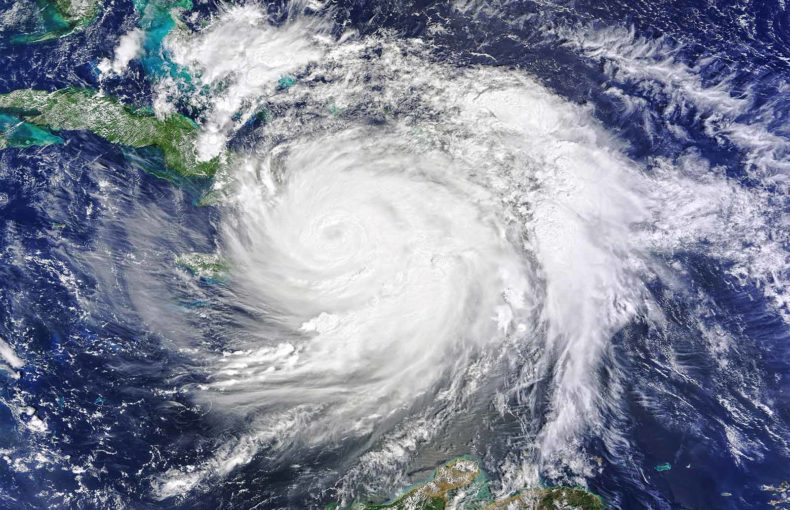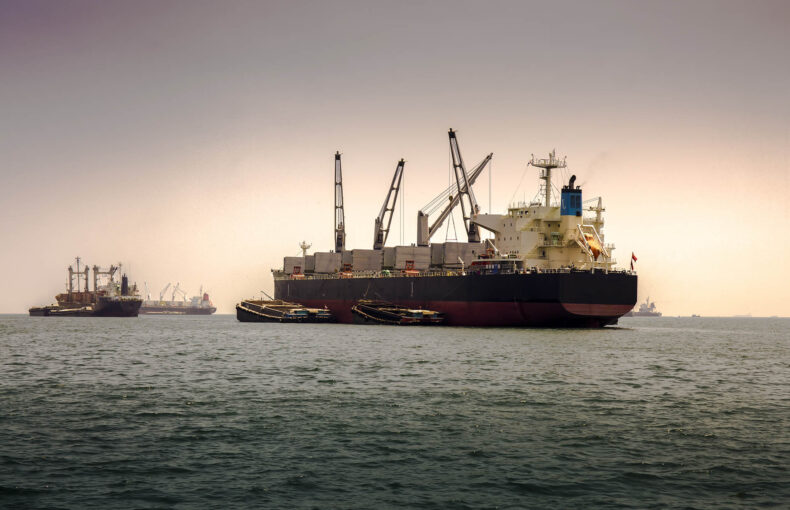How weather adds costs to supply chains
Is your supply chain under the weather?
The supply chains that underpin the global economy are vulnerable to the world’s weather. These international networks expedite the creation of the goods we use and the food we eat every day. But they also expose organizations to the risks of weather-related disruptions that can drive up costs.
For example, supply chain disruptions contributed to the $90 billion price tag of the freezing temperatures that brought Texas to a standstill earlier this year. At the other extreme, California’s 2018 wildfires cut $150 billion out of the American economy in part because of interruptions to national supply chains.
“The slowdown in production caused ripple effects to economic supply chains within California as well as the other 49 states and internationally,” said a University College London professor in an article published by the institution.
As significant as the risks are today, they could grow.
“A changing climate and the greater frequency and/or severity of hazards may increase disruptions in supply chains that interrupt production, raise costs, hurt corporate revenues, and lead to higher prices or shortages for consumers,” according to a McKinsey report.
These disruptions can occur across a supply chain, from the production of raw materials to the last mile of delivery, potentially causing costly interruptions that add up.
Sourcing
The weather that disrupts the production or extraction of a raw material in one location can send costly ripples down entire supply chains.
“It is critical that all stakeholders become aware of the potential impact of raw material supplies on their business,” according to a paper from the Massachusetts Institute of Technology. “If those raw materials become difficult to acquire, market forces may shift demand to other goods and therefore other supply chains.”
Take cotton, for example. Last year, anemic rainfall in west Texas cut expectations for the state’s output, the Wall Street Journal reported. At the same time, cotton-producing regions to the southeast were dealing with the repercussions of Hurricane Hanna, which flooded farmlands. The combination of these events contributed to a spike in cotton prices, pushing them to a two-year high.
Droughts can have a similar impact on other global markets. During the summer of 2018, heatwaves and scant rains in the European Union damaged food crops. The weather cut wheat production by 9%, increasing the staple’s price to a four-year high. The drought also drove up the cost of fresh vegetables, with broccoli’s price tag jumping by more than a quarter. Furthermore, animal feed reductions forced cattle farmers to bring forward slaughter, adding nearly 2% more beef than the previous year into the market.
Transportation networks of planes, trains, trucks, and ships form the backbones of supply chains. Each stage is exposed to weather-related disruption.
Share on Facebook Share on Twitter Share on LinkedIn
Manufacturing
Manufacturing also falls victim to the weather. Adverse conditions can shut down and limit access to plants, disrupting downstream production and potentially raising prices to both manufacturers and consumers, reported McKinsey.
In late 2011, heavy rains inundated more than 1,000 factories in Thailand, the world’s second-largest producer of hard disk drives. Western Digital Corporation, which produced one-third of all hard disks, lost nearly half of its shipments when its factory flooded, according to a report in the International Journal of Disaster Risk Reduction. Even hard disk drive factories that escaped flooding had to cut production as they ran short on parts.
With production and supplies curtailed, the costs of hard disk drives increased—significantly. Desktop versions jumped 80% to 190%, while mobile ones increased 80% to 150%. Prices remained high for up to six months after the industrial parks drained floodwaters from the factories.
“This clearly shows that the world economy is closely interconnected through a global supply chain network and the indirect damage of disasters now easily affects the consumer market at the global scale in the electronics sector,” the report continued.
See what Spire is built on.
Transportation
Networks of planes, trains, trucks and ships form the backbones of supply chains. Raw materials, parts, and goods crisscross the world before a final product lands in a consumer’s hands. Each stage is exposed to weather-related disruption.
For example, tornadoes can knock over trains, mudslides after heavy rains can block highways, heatwaves can cause sun kinks in rail tracks, and freezing temperatures that force planes to de-ice can disrupt flight schedules. Even light showers can increase travel time delay by up to 20%, according to the U.S. Department of Transportation Federal Highway Administration.
“This translates into financial impacts,” said the administration. It found that trucking companies and commercial vehicle operators lose about 33 billion vehicle hours to weather-related congestion each year. These delays cost them about $2 billion to $3.5 billion annually.
The weather also caused about 40% of all flight delays in the U.S. in 2019, according to the Bureau of Transportation Statistics. A single delayed plane can hold up the delivery of as many as 50,000 packages, the National Oceanic and Atmospheric Administration estimated.
Finally, the world saw how heavy winds could disrupt international trade when the 400-meter container ship Ever Given ran aground in the Suez canal. Amid strong gusts and sand storms, the vessels veered off course and collided with the canal’s bank, blocking the critical trade artery, Reuters reported. The blockage that lasted nearly a week disrupted global commerce, delaying $10 billion in trade a day and triggering a spike in oil prices.
Discover our free Maritime Weather demo tool
Preview our trusted open ocean weather forecasts alongside real time vessel positions.
From reactive to proactive
A report from the United Kingdom’s Met Office, the country’s meteorological agency, captured the weather’s total influence on supply chains.
“While many may believe that their product portfolio is not weather sensitive, operationally the weather will always have an impact on their logistics and commercial activities,” the agency wrote in Understanding the Role of Weather in the Supply Chain, which surveyed more than 200 industry experts.
This impact, however, does not have to be negative. Supply chain and logistics managers have an opportunity to turn risk into reward with the help of weather data. Retailers and suppliers who responded to the Met Office’s survey listed better on-shelf availability, sales forecasting, and customer service as benefits of using weather data. Both groups also identified less waste as an advantage.
“Using advanced weather data is a significant opportunity for organisations to improve supply chain efficiencies,” the Met Office said.
For example, Oldendorff, one of the world’s largest dry bulk shipping companies, used weather data from Spire Global to help improve its fuel consumption model’s accuracy and plot efficient courses. Similarly, VesselBot integrated Spire’s weather forecast data into digital solutions to help its customers reduce emissions and increase profitability.
Opportunities abound for using weather data to amplify supply chain efficiency, from both the supply side and demand management. Especially when you consider that services like Spire Weather provide data on more than 100 weather variables across the planet.
As the Met Office put it: “Better tracking and understanding of weather conditions is essential to better meet consumer demand, ensure the timely and safe delivery of goods and reduce unnecessary inventory and waste in the face of more seasonal weather extremes.”
Watch our Wildfire Prediction & Observation Use Case:
Spire Weather has solutions to solve challenges across industries.



